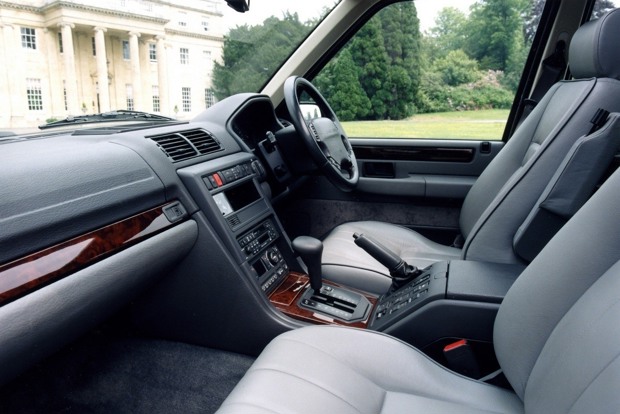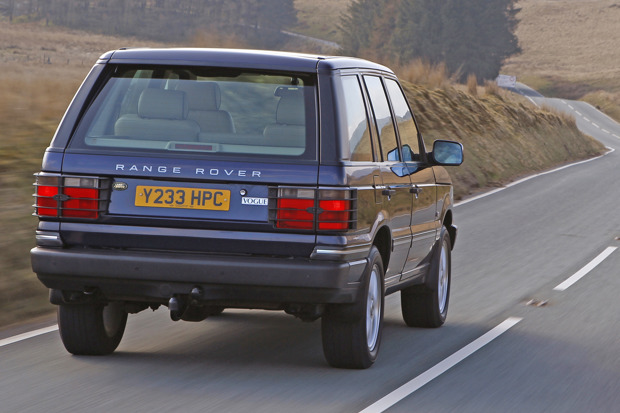Future Classic Friday: Range Rover P38a

The original Range Rover underwent something of a metamorphosis during its life, from a utility vehicle designed for farmers with families to an upmarket luxury cruiser.
Towards the end of its tenure, with the introduction of Vogue SE and long-wheelbase LSE models, the Range Rover Classic had become a status symbol - an upmarket V8-engined limousine that just so happened to be ultra-capable off-road.
It was a far cry from Land Rover's original vision for the model, but not one without serendipity. Were it not for the 'yuppie' culture of the 1980s, that elevated the original Range Rover's social status, the brand wouldn't be what it is today.
Indeed, it was the additional revenue generated by the Range Rover's popularity boost late in life (it managed to increase sales year-on-year all the way through from 1970 to 1990) that gave the company the money to develop the Land Rover Discovery, a car that pretty much filled the gap that the original Range Rover had left behind.
But much as it had become a cash cow, by the 1990s, the classic Range Rover was also old-hat - and the opposition were catching up. Fast.
A new Range Rover was required, but while the Land Rover business itself produced a healthy profit, the financial health of its parent Rover Group was less robust, meaning that development money was limited.
There was cash in the pot for a complete restyle, a new interior and revised V8 engines, but the ancient chassis, body shell and glass area would remain. It was, essentially, another Land Rover Discovery, albeit one with some rather upmarket aspirations.
The task of styling the new car fell to Land Rover's chief designer George Thomson, who brought in two Italian styling houses for inspiration. In the end, though, it was the Land Rover in-house design that reigned supreme - it was the only one considered to truly represent what the Range Rover image stood for.
A good chunk of the budget was spent on enhancing the interior. If the Range Rover was to be a luxury vehicle, it needed a cabin to match, and the Range Rover P38a (derived from its project name 'Pegasus' and the assembly building '38a') was distinctly more upmarket than its forebears.
It featured a soft wraparound dash, completely new seats, a chunky steering wheel and wide centre console, while much of the switchgear, such as the column stalks and headlight switches, was taken from the Rover 800.

Initially, two engines were planned, both V8s and derived from the existing 3.9-litre EFi unit.
These had displacements of 4.0 and 4.6-litres, though the smaller of the two would be riddled with reliability problems, was less powerful and not much more economical than the larger one, making it somewhat superfluous even when new and even more so today.
There was initially no diesel planned, as the 300 TDi unit from the Discovery was considered too noisy and unrefined for a Range Rover, despite its inherent indestructibility. This left an important question unanswered.
The solution came with the BMW takeover of Rover Group in 1994. The German company had a six-cylinder 2.5-litre diesel engine, which was swiftly integrated into the build programme. It gave Range Rover buyers an economical option, but it was no ball of fire in the heavy Range Rover shell.
When the P38a made its debut in September 1994, it was an instant hit. Despite its aged underpinnings, it was regarded as the best off-roader in the world, while in range-topping Vogue SE and HSE trim levels it was quite something to behold.
It was a pleasure to drive, with hugely improved refinement over the Range Rover Classic and massively uprated roadholding thanks to its fat tyres and self-levelling air suspension.
By 1998, the lower trim levels accounted for only a fraction of Range Rover sales, so in order to capitalise on the demand from wealthy buyers the company introduced 'Westminster' and 'Autobiography' editions, the latter of which came with a bewildering array of personalisation options.
Yet beneath all this, the Range Rover was still a Land Rover, and that means that its off-road capability was always peerless. Only another Land Rover can match it off-road...
Now, more than a quarter of a century since its inception, the P38a is as attainable as it ever will be. If you're brave (and you need to be) then you can pick one up for less than a grand. Between £3-£4k, there are hundreds to choose from. Unless you need the economy of a diesel, the 4.6 HSE is the way to go.
Yes, it'll fry its own electrics every now and then, there probably isn't a P38 left without a leaking sunroof, and they're not immune to sill, wheelarch, floor and chassis rot. The air suspension can also be problematic. But if you buy a decent one now and look after it, the case for the Range Rover P38a as a future classic is surely beyond argument. Find a classic Range Rover for sale.


